Reviews
Errol Morris
USA, 1988
Credits
Review by Matthew Derby
Posted on 01 October 2010
Source MGM DVD
Categories 31 Days of Horror VII
Few films have provoked real fear in me—not the low-hanging fruit of shock or repulsion but closer to what H.P. Lovecraft termed ‘cosmic fear,’ or “a malign and particular suspension or defeat of those fixed laws of Nature which are our only safeguard against the assaults of chaos and the daemons of unplumbed space.” But The Thin Blue Line, Errol Morris’s 1988 documentary about a man convicted of a crime he did not commit, is among the handful that have shaken me to my core and kept me up at night immobilized in paralytic terror. It’s absurd to suggest that The Thin Blue Line belongs to the horror genre. But its depiction of a close-knit community’s drive to avenge the death of a police officer, even though it meant sending an innocent man to his death, induced in me the sort of destabilizing chills I’ve always expected to feel in the wake of traditional horror films.
The Thin Blue Line tells the story of Randall Adams, a drifter from Ohio who arrives in Dallas, Texas, looking for work. He runs out of gas and a teenager named David Harris gives him a ride in a blue Comet he’s just stolen. They get high at a drive-in theater and leave halfway through the second feature, and the sequence of events that follow - ending in the brutal and inexplicable shooting of a police officer - is the subject on which the film is so feverishly obsessed. Morris uses the tools of the documentary filmmaker - headshot interview footage, forensic diagrams, courtroom artist renderings, and newspaper clippings - to tell the story, but instead of presenting the case in a linear fashion, drawing back layer after layer of the onion skin to reveal a core truth embedded at its center, he retells the events of the night repeatedly from the perspective of all of the involved parties using staged reenactments. Each time we watch, the story changes, and we gradually lose our grip on reality. We come to know the events as a sort of collective myth, a cloud of competing narrative threads that never line up to provide a reliable composite. We listen to Randall Adams’ patient insistence that he did not commit the crime and watch the mounting pile of evidence against young David Harris, who actually bragged to his friends that he’d shot officer Robert Wood and brandished the pistol he used to prove his point, but only Adams’ defense attorneys seem to believe in his innocence. Everyone else involved in the case acts convinced that Adams is the killer, and they unanimously and chillingly convince a jury of the same.
Morris conducts the interviews sitting with his head right next to the camera lens (a technique he would later perfect with his Interrotron teleprompter device) and all of his questions are edited out of the footage so that it is as if the subjects are speaking to us directly. Adams has a forlorn cast to his face as he describes with patient disbelief the chain of events that led him to prison. There’s something innately convincing about his demeanor, some distant spark of truth in his eyes, and Morris captures it with precision. David Harris, on the other hand, looks like a woodland predator with a cunning smile that might as well be loaded with fangs. The cabal of local goons who defend Harris’ innocence, from the officer who first spoke to him to the judge who set him free, seem casually disinterested in entertaining the fact that they might have put the wrong person away. Morris suggests that their motive was to produce a perpetrator eligible for the death penalty, which would, in their eyes, right the grave wrong of an officer’s murder. But he also floats a more unsettling theory that Adams was convicted because he was a drifter—that Harris (a native of nearby Vidor, Texas) was spared in part because he was ‘one of them.’ Their unilateral determination to convict Adams recalls the community from Robert Hardy’s The Wicker Man who conspire to deny to authorities the existence of a lost girl.
It is the reenactments, though, that cast the longest shadow of fear on the film, because instead of attempting to flood the crime scene with detail in an attempt to convince us that what we’re seeing is ‘real,’ Morris shows us only the details that are known about the case. We clearly see the suspect’s blue car pulled over at the side of a road and we see the squad car behind with its rotating red light rack, but we cannot see anything of the landscape beyond. Officer Woods’ backup, who was drinking a milkshake at the time of the shooting, hurled the beverage to the side of the road, and we see the paper tumbler soar across a field of darkness in slow motion, but again, anything else that might appear in the shot has been hidden. We watch a figure - sometimes two figures - in the suspect’s vehicle, but we cannot see their face; just a silhouette shifting uneasily in the moments before the shooting. The rigorous stylization of the reenactments emphasizes that what we are watching is not at all ‘what happened’ but what an individual believed may have happened. These are the things we know, Morris seems to be saying, and the things we do not know exist only in the unknowable black cosmos of history. And it is that uncertainty that I find most unsettling about The Thin Blue Line. The true horror of the darkness is not that a monster will emerge but that it will conceal itself there.
Morris goes to great lengths throughout the film to remain out of the frame. We do not see him or hear his voice in the interview sessions and he provides no narration to prepare us for what we are about to see. This strategy is ruptured in the final sequence, in which we hear a scratchy, distorted conversation between Morris and David Harris after Harris had been convicted on unrelated murder charges. Morris asks, “Would you say that Adams is a pretty unlucky fellow?” And Harris responds, “definitely. If it wasn’t for bad luck, he wouldn’t have had none.”
“What was the bad luck?” Morris asks.
Harris says, “Could have been any number of things. Depends on how you want to look at it. It’s like I told you a while ago about the guy that didn’t have no place to stay. If he had a place to stay, he’d never have no where to go, right?”
“You mean if he would have stayed there at the motel that night this would never have happened?” You can hear Morris’ voice rising slightly here as Harris begins a lyrical, roundabout confession to the crime.
“Good possibility,” Harris says, “good possibility. Heard of the proverbial scapegoat? There’s probably been thousands of innocent people convicted and there will probably be thousands more. Why? Who knows.”
There is something uniquely terrifying about this recording. Beneath the ambient squall of static you can actually sense Morris’ tragic relief as Harris elaborates on his confession. The moment is brutal and naked, and the tenuous nature of the recording underscores how the confession might not have happened at all had Morris not pursued the case. Finally, Morris has captured the truth that evaded him throughout the production, years after Randall Dale Adams’s life has been effectively destroyed.
The ‘Thin Blue Line’ referenced in the title of the film is the border, protected by law enforcement, that keeps a populace safe from anarchy. But The Thin Blue Line demonstrates that if any such line truly exists, it is riddled with holes through which any person may irretrievably slip. What greater terror is there in the world than the sense that we are never really safe?
More 31 Days of Horror VII
-

The Thin Blue Line
1988 -

The Ninth Configuration
1980 -

Scream
1996 -
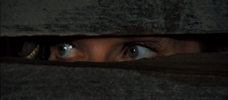
Dying Room Only
1973 -

Brain Dead
1990 -

Zombi 2
1979 -
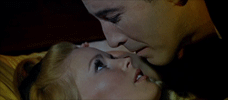
Dracula Has Risen from the Grave
1968 -

The Storyteller
1988-1989 -
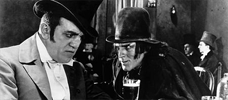
Dr. Jekyll and Mr. Hyde
1920 -
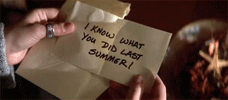
I Know What You Did Last Summer
1997 -

Don’t Be Afraid of the Dark
1973 -

Dark Age
1987 -

Inferno
1980 -
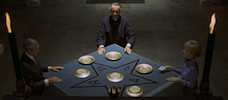
To the Devil a Daughter
UK / West Germany -

Trapped
1973 -
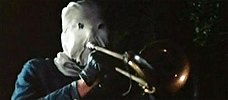
The Town that Dreaded Sundown
1976 -

Halloween H20: Twenty Years Later
1998 -

Killdozer
1973 -

Pin
1989 -

Frankenstein Created Woman
1967 -

Reptilicus
1961 -
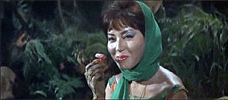
Matango
1963 -

I Still Know What You Did Last Summer
1998 -
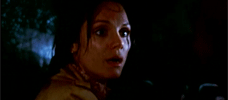
Night Terror
1977 -
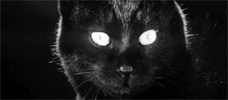
Kuroneko
1968 -

Demons
1985 -
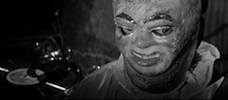
Paranoiac
1963 -

Let Me In
2010 -

The Phantom of the Opera
1925
We don’t do comments anymore, but you may contact us here or find us on Twitter or Facebook.



